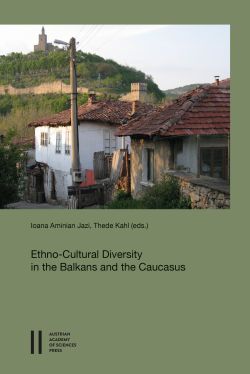
Ethnocultural Diversity in the Balkans and the Caucasus, pp. 293-320, 2023/02/09
Circassians (Адыгэ/Adyge) are an indigenous population of the Northwest Caucasus. As a result of the Russian conquest of the Caucasus in the 19th century, most of the Circassians were forced to flee their homeland. They were resettled in various parts of the Ottoman Empire, mainly in Anatolia, the Balkans (today Bulgaria, Serbia, Kosovo, Romania, North Macedonia and Greece) and the Middle East. An estimated 250,000–400,000 Circassians are believed to have arrived in the Balkans. In Kosovo there were approximately 12,000–40,000 Circassians. Due to the political turmoil in the Balkans and the dissolution of the Ottoman Empire, Circassians subsequently left in several waves to go to the Ottoman Empire, afterwards Turkey. As a result, the number of Circassians in Kosovo was reduced to 400–500 people, living in a small number of villages between Priština and Vučitrn, such as Donje Stanovci, Velika Reka and Miloševo. In their historical homeland, the North Caucasus of the Russian Federation, the Circassians number approximately 700,000 people and live primarily in three North Caucasian republics (previously autonomous regions in the Soviet Union): Kabardino-Balkaria, Karachay-Cherkessia and Adygeya. However, most of the ethnic Circassians (3–5 million people) are in the state of diaspora, living predominantly in Turkey, the Middle East, Europe and the USA. Since the collapse of the Soviet Union and the fall of the Iron Curtain in the early 1990s about 2,000–3,000 Circassians from Turkey, Syria, Jordan, etc. have re-immigrated to the North Caucasus of the Russian Federation. As a result of the Kosovo conflict, 64 Kosovo Circassians families (about 160 people) migrated to the Republic of Adygeya in 1998/99. The migration of the Kosovo Circassians to the North Caucasus in 1998/1999 was the last mass exodus of Circassians from the Balkans. This article is a part of a PhD project dealing with the identification of Kosovo Circassians before and after migration to the Russian Federation. In this article, I would like to demonstrate and compare the role of culture (particularly ethnic dances and music) in the construction of ethnic identity among Circassians in Kosovo and in the Caucasus. The material for this article is based on in-depth interviews with members of the Kosovo Circassian community collected during field research in the Republic of Adygeya in the Russian Federation.
Keywords: Ethnicity, Music, Culture, Circassians, Kosovo, Caucasus